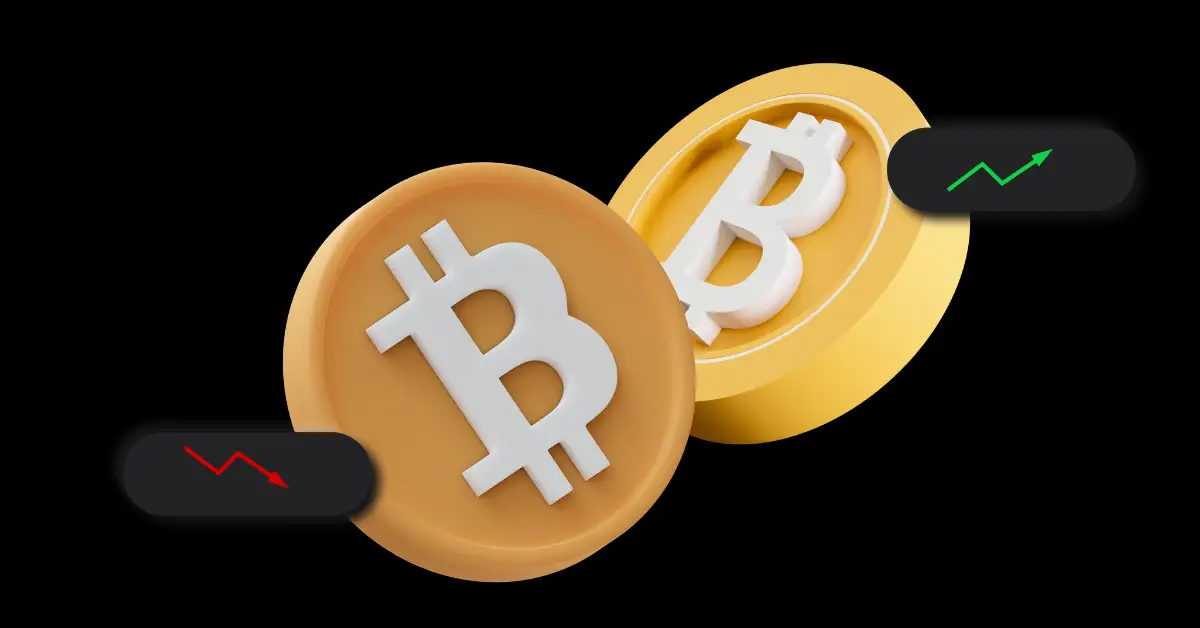Lumoz Launches zkProver and zkVerifier Based on EigenLayer
On May 22, Lumoz announced the launch of zkProver and zkVerifier based on EigenLayer, which not only significantly enhance the efficiency of computation and verification but also effectively ensure the security and profitability of the entire service process through EigenLayer's restaking mechanism.

Despite recent airdrop controversies, there is no doubt that EigenLayer has become the most anticipated star project of 2024 with its Re-staking mechanism. Its excess returns have not only driven TVL to soar but also prompted users to decisively withdraw from the meme coin frenzy and redirect their funds and confidence back to the Ethereum ecosystem.
As of the time of writing, EigenLayer's ETH TVL has exceeded 5 million ETH, with over 54 million tokens staked. The number of active AVS (Actively Validated Services) and Operators are 11 and 251, respectively. Currently, the EigenLayer ecosystem is also booming, with over 20 leading projects such as Lumoz, Espresso, Near, and Dodo participating.
In no time, a revolution centered around ETH and leveraging EigenLayer to reshape blockchain security and returns has begun.
This article will take Lumoz as an example to delve into the series of technical explorations carried out on EigenLayer, further promoting technological advancements in the Ethereum and broader blockchain industry.
1. Lumoz Announces Launch of AVS Computing Layer Based on EigenLayer
As a leader in modular computing layers and ZK Rass, Lumoz has not only performed excellently in the capital market but also continuously innovated in the technical field. In April 2024, Lumoz first announced the completion of Pre-A financing (with a current valuation of up to $300 million), and then announced support for the Op Stack + ZK Fraud Proof Layer 2 architecture, opening a new model for L2 architecture.
This week, Lumoz announced the official launch of the AVS computing layer based on EigenLayer, composed of zkProver and zkVerifier, which can significantly enhance network computing power and security.
Lumoz's zkProver focuses on generating zero-knowledge proofs (ZKP), verifying data authenticity without revealing specific data. With powerful computing resources, zkProver can quickly generate efficient zero-knowledge proofs, significantly improving the privacy and security of the blockchain network. zkVerifier is responsible for verifying these zero-knowledge proofs, ensuring their correctness and reliability. Combined with EigenLayer's re-staking mechanism, zkVerifier not only leverages Ethereum's security but also provides additional economic incentives for validators. This dual verification mechanism greatly enhances the overall security of the network and reduces trust risks.
Note: EigenLayer's re-staking mechanism enhances the security of the Ethereum ecosystem by providing AVS, addressing trust issues and capital cost burdens.
By integrating powerful computing resources with EigenLayer's re-staking mechanism, Lumoz has created an efficient and secure computing service ecosystem. This innovation not only improves the computing power and security of the blockchain network but also provides more application scenarios and value for developers and users. Through zkProver and zkVerifier, Lumoz brings unprecedented innovation and value to the blockchain field, driving technological progress across the industry.
2. Lumoz Computing Layer
The Lumoz computing layer architecture is a highly integrated and coordinated system, with its main components and functions as follows:

It mainly includes the following parts:
- Ethereum: Adopts the EigenLayer standard to build Actively Validated Services (AVS). Enhances AVS security using EigenLayer's staking token mechanism
- EVM Chain: Supports a diverse blockchain environment compatible with the Ethereum Virtual Machine (EVM), including but not limited to Polygon zkEVM, Polygon CDK, ZKStack, and Scroll, ensuring broad compatibility and scalability
- Lumoz AVS Oracle: Responsible for obtaining and storing data from EVM-compatible chains, ensuring high data availability and integrity, providing a solid data foundation for the computing layer
- Lumoz Chain: Acts as the core management layer of the entire computing layer, responsible for task scheduling, reward distribution, and management of zkProver and zkVerifier, including but not limited to node joining and exiting processes
- zkProver: Nodes that perform specific computing tasks
- zkVerifier: Verification nodes that validate execution results
Through the close collaboration of these modules, the Lumoz computing layer not only provides a secure and efficient computing environment but also lays a solid foundation for future expansion and upgrades through its modular design.
3. What Problems Can It Solve?
3.1 Large-Scale Computing Power Demand
The cloud infrastructure provided by Lumoz offers strong support for zero-knowledge proof computing. This support is crucial for ZK-Rollups, a blockchain scaling solution that reduces the load on the main chain and increases transaction throughput by executing transactions off-chain and using ZKP to prove the validity of transactions before submitting these proofs on-chain.
Lumoz Cloud Infrastructure Capabilities:
- Compatibility: Lumoz's cloud infrastructure is compatible with various ZK-Rollup solutions, such as Polygon CDK, zkSync, StarkNet, and Scroll. This means it can serve these different platforms without each platform needing to establish its own infrastructure.
- ZK-PoW Algorithm: Lumoz combines miners' computing resources and cloud infrastructure through the ZK-PoW (Zero-Knowledge Proof of Work) algorithm, allowing miners to contribute their computing power to support ZKP computing.
- Performance and Efficiency: By supporting parallel computing for ZKP, computing efficiency can be significantly improved as multiple computing tasks can be performed simultaneously. Additionally, sequential submission ensures orderly processing of transactions.
- Recursive Aggregation Algorithm: Optimizing the recursive aggregation algorithm can reduce the number of ZKPs required, thereby lowering computational complexity and costs.
- Network Communication Improvements: Improving network communication can reduce data transmission time and increase overall system response speed.
- Cost-Effectiveness: Through the above optimizations, Lumoz can reduce the cost of ZKP computing, making solutions using ZK-Rollups more cost-effective.
Lumoz's cloud infrastructure provides a powerful, flexible, and cost-effective solution for ZKP computing, helping to drive the development and application of blockchain technology.
3.2 Reducing zk Proof Gas
The design strategy of zkVerifier aims to enhance efficiency, scalability, and effectively reduce transaction costs, specifically in the following aspects:
- Integration of Multi-Source Proofs: zkVerifier can integrate proofs from different sources, supporting a wide range of zero-knowledge proof application scenarios. This flexibility is a key advantage in the blockchain ecosystem as it allows different projects and applications to utilize zkVerifier services.
- Gas Cost Savings: Through carefully designed proof processing and verification mechanisms, zkVerifier significantly reduces the gas cost of submitting proofs, providing users with a more cost-effective blockchain service experience.
- Adaptability to Proof Characteristics: zkVerifier demonstrates adaptability to the characteristics of proofs generated by different proof systems, including proof size, verification time, and verification logic. This adaptability is crucial for ensuring the efficient operation of the system.
- Customized Release Strategy: Based on the characteristics of different proofs, zkVerifier has designed a customized release strategy, optimizing the use of on-chain resources and ensuring efficient proof delivery, helping to reduce network congestion and improve transaction speed.
- Deployment of Dedicated Verifiers: zkVerifier deploys dedicated verifiers, a key mechanism for ensuring proof validity. These verifiers ensure that only verified proofs can be published to Ethereum, maintaining the system's security and reliability.
- Optimization of Data Availability Layer: zkVerifier's data availability layer ensures the persistence and accessibility of proofs while providing a cost-effective storage strategy, which is crucial for reducing system operating costs.
- Deep Integration with Ethereum: zkVerifier publishes verification results to Ethereum, and Ethereum generates verification proofs. This step is key to ensuring cross-chain interoperability and trust, helping zkVerifier achieve seamless collaboration with major blockchain networks like Ethereum.
- Authority of Verification Proofs: Verification proofs generated by Ethereum ensure the authority and reliability of zkVerifier's verification results, providing a solid foundation for cross-chain trust and collaboration.
These innovative designs of zkVerifier not only address the challenges faced by existing blockchain technology but also make significant progress in improving efficiency, reducing costs, and enhancing interoperability. This design helps promote the broader application of blockchain technology and provides users with a more secure and efficient service environment.
4. Specific Workflow
4.1 zkProver
zkProver is the core component for generating zero-knowledge proofs. ZKP allows the prover to demonstrate the correctness of a statement to the verifier without revealing any additional information. zkProver includes various types of provers, such as zkRollup Prover, zkFraud Prover, and zkML Prover, each optimized for specific computational tasks to ensure optimal performance and system efficiency in their respective fields.

Workflow:
- Task Acquisition: Lumoz AVS Oracle and Dispatch modules obtain tasks from the blockchain and synchronize them to Lumoz Chain. These tasks are assertions or computations that need to be proven.
- Task Distribution: Tasks are distributed to different provers through the Dispatch module. Dispatch acts as the task scheduling center, determining which type of prover is best suited to handle the task based on its nature and requirements. The Dispatch module dynamically allocates computing resources through intelligent algorithms, optimizing resource allocation in real-time based on task load and the performance of each prover, ensuring stable operation during high-demand periods.
- Proof Generation:
- zkRollup Prover: Focuses on handling proofs related to transaction batch compression, suitable for improving blockchain processing speed and scalability.
- zkFraud Prover: Used to generate fraud proofs, which can help detect and prevent improper behavior.
- zkML Prover: Specializes in handling complex proofs related to machine learning model verification, verifying the model's output without disclosing the model itself or its input data.
- Other Provers: Other provers used for specific proofs.
- Proof Submission: The generated proofs are sent to Lumoz Chain for verification and archiving.
4.2 zkVerifier
zkVerifier is another key component in the architecture, responsible for verifying the ZKPs generated by zkProver. It ensures the correctness and validity of the proofs submitted to the chain, safeguarding the system's trust and security. Through an optimized verification process, zkVerifier efficiently handles proofs, reducing operational costs and gas consumption.

Workflow:
- Proof Submission: Proofs generated by zkProver are submitted to Lumoz Chain, initiating the verification task.
- Proof Verification: Lumoz Chain sends the verification task to multiple zkVerifiers, which independently perform distributed verification.
- Collective Decision: At least two-thirds of the verification nodes confirm the proof's validity, ensuring the authority and consistency of the verification results.
- Verification Result Processing: Valid proofs and their results are returned to the Lumoz Proof Contract on the blockchain by Lumoz AVS Oracle and recorded and responded to by the Task Manager Contract to Lumoz Chain.
5. Conclusion
Lumoz announced the launch of zkProver and zkVerifier based on EigenLayer, significantly enhancing computational and verification efficiency while effectively ensuring the security and profitability of the entire service process through EigenLayer's restaking mechanism. With specialized node design, Lumoz can provide solutions for different computational tasks, achieving optimal performance and efficiency. Meanwhile, through the restaking mechanism, Lumoz offers substantial returns to stakers, further enhancing the system's economic security.
In the future, we hope to see more projects like EigenLayer and Lumoz that directly address current blockchain challenges, genuinely solve user pain points from a practical perspective, and actively explore and attempt more efficient and secure solutions, thereby promoting the progress and prosperity of the entire industry.
Disclaimer: The content of this article solely reflects the author's opinion and does not represent the platform in any capacity. This article is not intended to serve as a reference for making investment decisions.
You may also like
Is Trump Pro-Crypto? Only One-Third of Australians Think So

Bitcoin’s Next Major Top Projected for February 2026
The Pi Cycle Top Indicator signals a potential Bitcoin peak in February 2026, with a projected price of $258K per BTC.Understanding the Pi Cycle Top IndicatorWhat This Means for Investors

M2 Global Liquidity Rises Again: Will Alts Follow
M2 global liquidity is rising again after peaking in Dec 2024. Will altcoins start catching up soon? Here's what to expect.Altcoins Lag Behind But May Soon Catch UpWhat to Expect Next?

Bitcoin & The Everything Bubble: Why Smart Investors Are Buying
As the Everything Bubble crashes, Bitcoin is set for a fast recovery. Here’s why investors like Robert Kiyosaki are buying the dip.Why Bitcoin Will Recover FirstWhat’s Your Post-Crash Plan?
